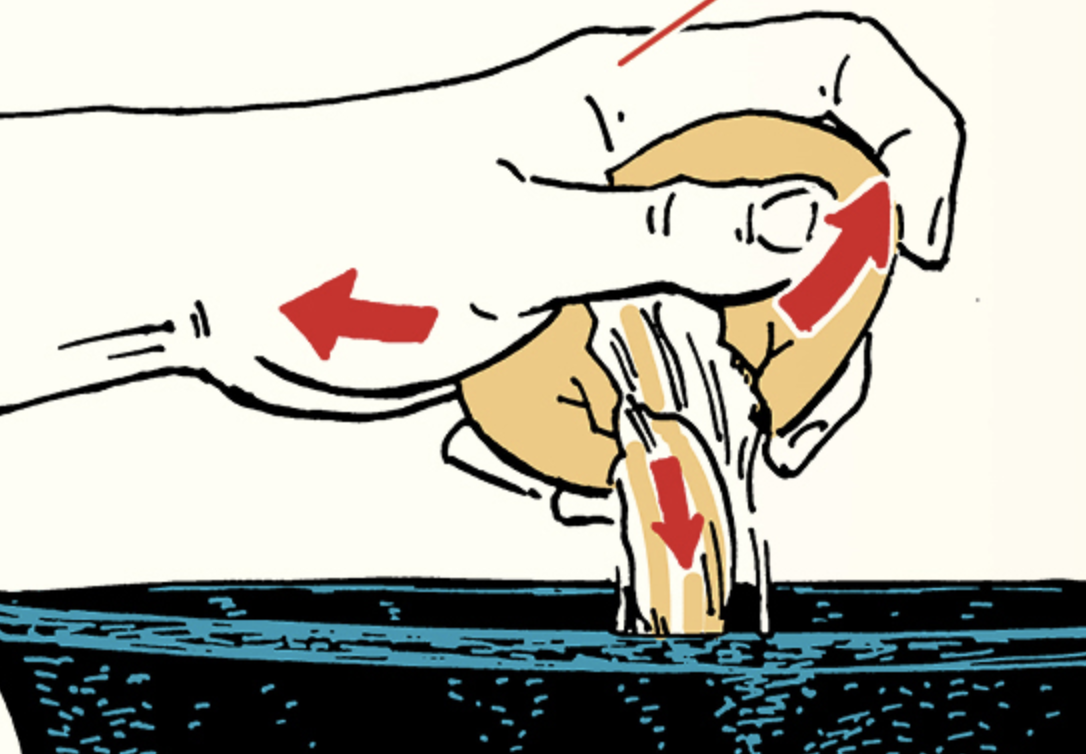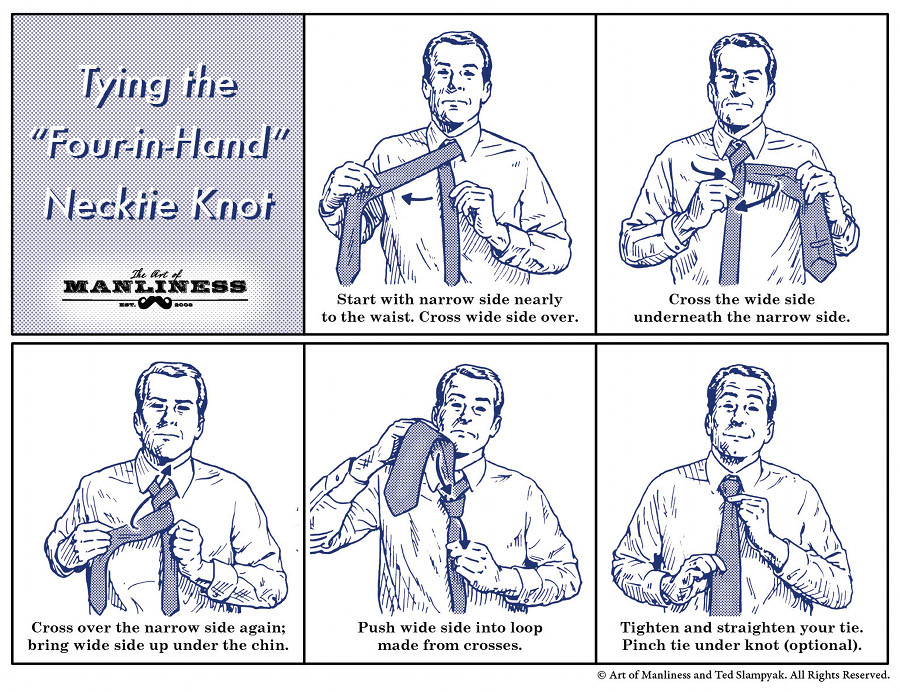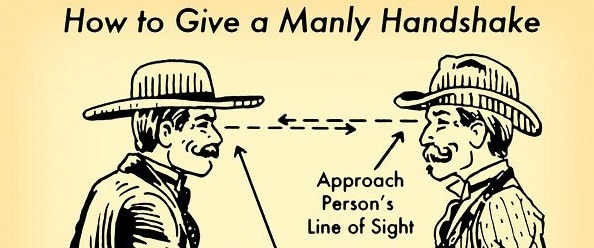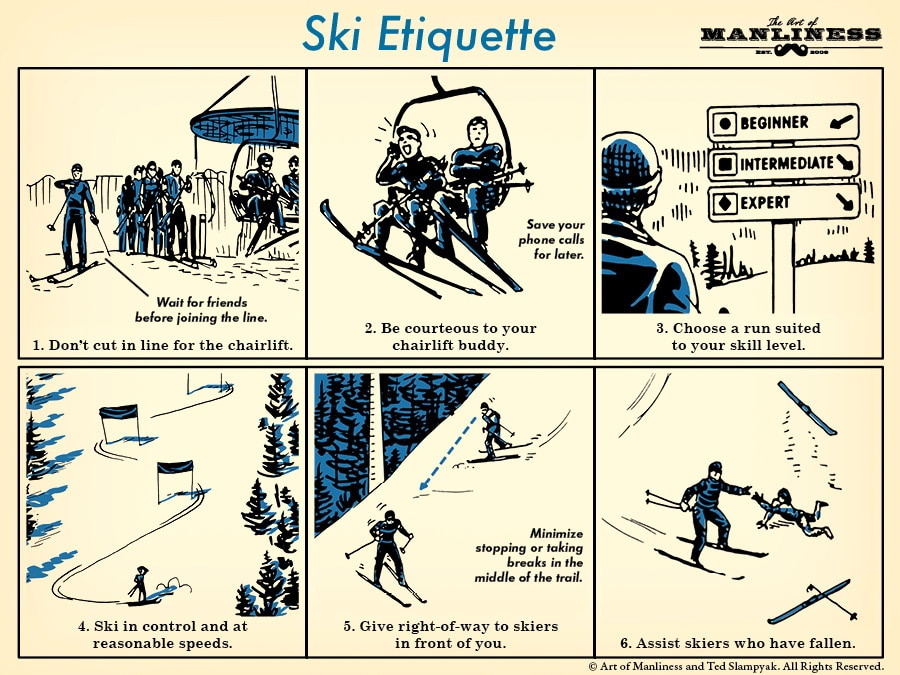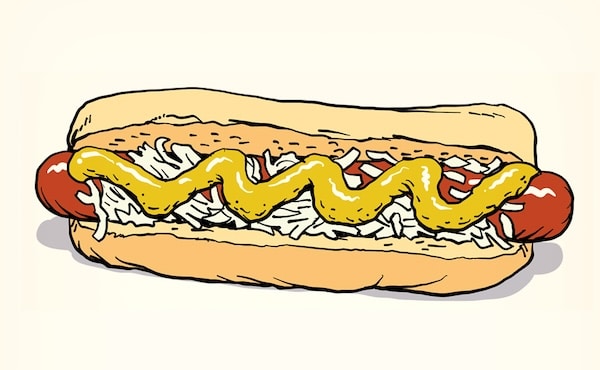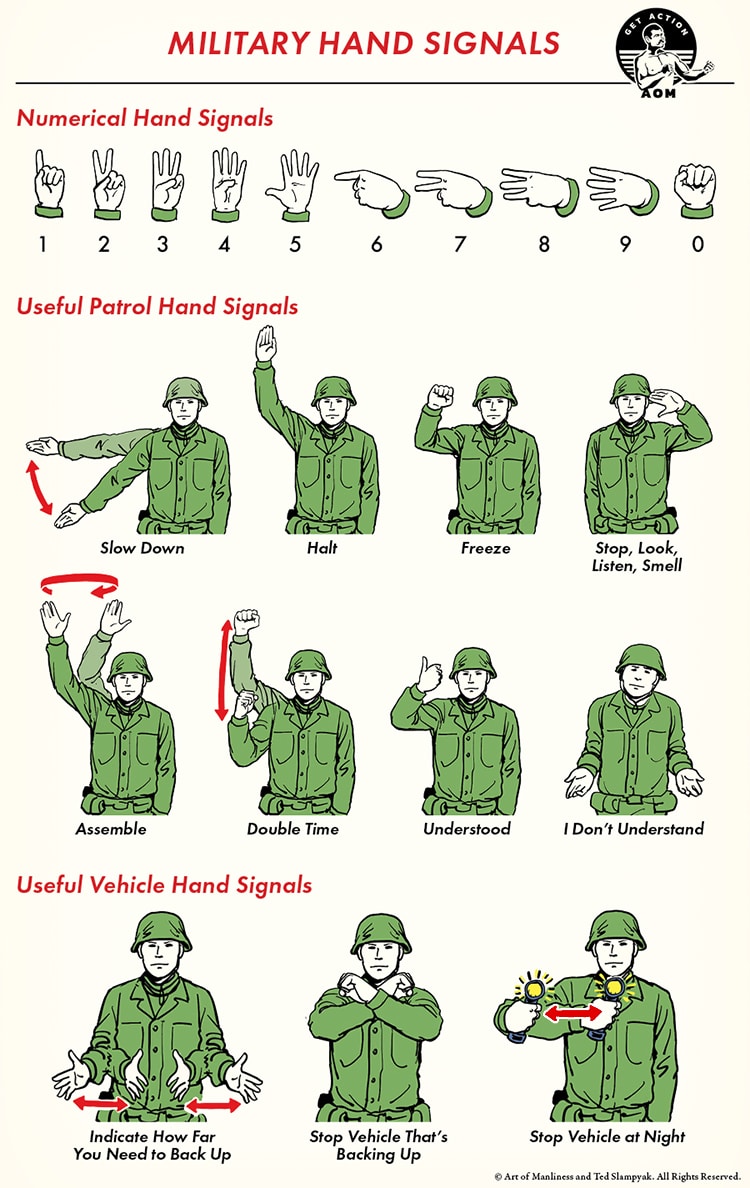
Soldiers often need to operate in complete silence to maintain the element of surprise and avoid detection by enemy forces.
But they still need to communicate with each other.
So, how do they do it without telegraphing their position?
With hand signals.
During the past century, the military has developed hand signals that allow its members to communicate with each other while in stealth mode. The hand signals also allow communication when things are too loud for their comrades to hear oral communication.
The U.S. Army first developed uniform hand signals during WWII. As time went on, the vocabulary of this visual language expanded. Other branches of the military also developed hand signals, typically following the Army’s lead. The most recent standardized hand signals from the U.S. Army are codified in TC 3-21.60. There are many of them for different situations: patrol, convoy control, ground-to-air communication, etc.
To find out which military hand signals might be useful for a civilian to know, I talked to fellow Okie and former Green Beret Harrison Anderson, who did 12 years of active duty service in the Army. He’s now in the Army Reserves and finishing up his business education at OU (Boomer Sooner, baby!).
A Guide to Military Hand Signals
While you might not find yourself in Nam trying to sneak past Charlie, it can still be useful for civilians to know a few military hand signals.
As Harrison noted, “Hand signals can come in handy if you’re out hunting and need to keep quiet.”
If you’re not a hunter, you can use them when paintballing, playing capture the flag with your bros, or attempting to avoid being detected by a horde of baby-eating barbarians during the apocalypse. Plus, they’re just cool to know.
Here’s a rundown on some of the main military hand signals:
Numbers
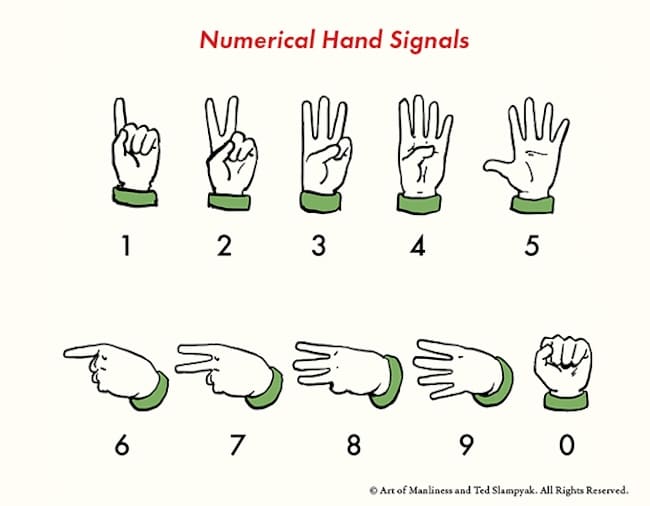
Because one of a soldier’s hands may be occupied with a gun, the Army has developed a system to indicate numbers with just one hand.
Basically, the hand signals for numbers 1-5 are straightforward, with one finger extended up for each numeral. Then when you get to 6-9, you turn your hand to the side and extend out the number of fingers you’re adding to 5, e.g., two fingers out is 5 + 2 or 7. A closed raised fist is zero.
Useful Patrol Hand Signals
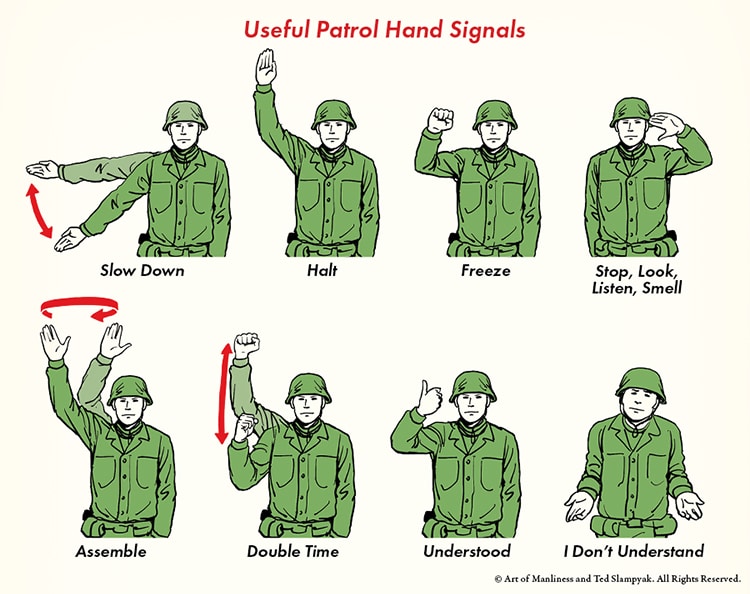
Slow down. Tell people to slow their pace by extending your arm horizontally to the side, palm to the front, and waving your arm downward several times.
Halt. Signal for someone to stop by raising your hand above your head, palm facing forward.
Freeze. Use the same signal for halt, but make a fist. Freeze tells someone to not only stop, but to not move at all to avoid detection.
Stop, Look, Listen, Smell. Place your open hand behind your ear to tell your crew to pay attention to their environment.
Assemble. Raise your arm vertically above your head, palm open, and make a circle with your arm. Use this signal when you need your buddies to rally around you so you can talk shop.
Double time. Use this signal to tell your crew to hurry the hell up. It’s a lot of fun to do. Just pump your fist like you’re trying to get a truck driver to blow his horn.
Understood. The U.S. Army actually codified this common civilian gesture. Flash a simple thumbs up like the Fonz to indicate you understand the communication.
I Don’t Understand. This was my favorite one because it’s so funny. Just shrug your shoulders like you have no clue what’s happening, which indicates you don’t understand the communication.
Useful Vehicle Hand Signals
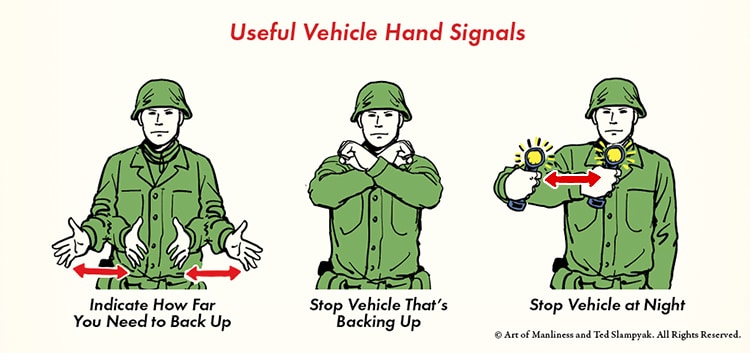
Harrison shared a few hand signals that can be used when you’re communicating with the driver of a vehicle. He told me he actually uses these a lot out in the civilian world when he or someone else is backing up a big truck with a trailer hitched to it and the driver’s visibility is compromised.
When your friend’s behind the wheel, you can use these signals to help him maneuver his vehicle safely (or vice versa).
Indicate How Far a Driver Has to Back Up. Use this hand signal when someone is backing up a vehicle and doesn’t want to run into something behind it. As the signaler, place yourself behind the vehicle but in sight of the driver’s side mirror. Extend your forearms to the front, palms separated and facing inward. As the vehicle backs up, bring your palms progressively closer together to indicate to the driver the shrinking distance between the vehicle and the object behind it.
Stop a Vehicle That’s Backing Up. When you need to indicate that the driver of the reversing vehicle needs to stop, make an “X” with your forearms.
Stop a Vehicle at Night. Harrison said knowing this signal can come in handy for civilians when a disaster like a tornado or wildfire strikes. Often, the National Guard will be sent to these areas to help with rescue and clean up or to enforce an evacuation order. If you approach a road closure barricade at night, you might see a guardsman moving a flashlight from side to side; that’s a military signal to stop.


